The Dancing Sorcerer
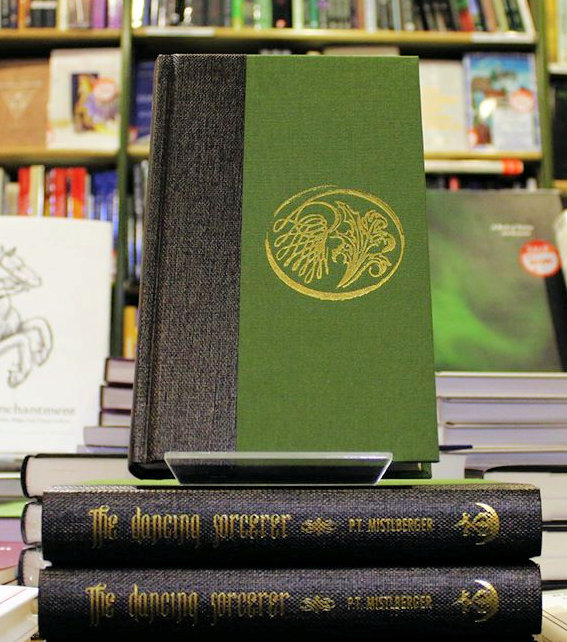 The Dancing Sorcerer: Essays on the Mind of the Magician is my 6th published book. This was, in many respects, the book I had been wanting to write for some time. In late 2017 I was contacted by Gabriel McCaughry, who had read a couple of my previous books, and proposed that I write something for his publishing house, Anathema. I was not familiar with Anathema at the time, but when I looked at his website and the catalogue of the works published by his company, I was immediately impressed. It is hard not to be. Gabriel is a craftsman and brings a remarkably high aesthetic standard to anything that he sees fit to publish. He is also, fortunately, patient, as it took me almost two years to deliver the manuscript to him that he eventually published.
The Dancing Sorcerer: Essays on the Mind of the Magician is my 6th published book. This was, in many respects, the book I had been wanting to write for some time. In late 2017 I was contacted by Gabriel McCaughry, who had read a couple of my previous books, and proposed that I write something for his publishing house, Anathema. I was not familiar with Anathema at the time, but when I looked at his website and the catalogue of the works published by his company, I was immediately impressed. It is hard not to be. Gabriel is a craftsman and brings a remarkably high aesthetic standard to anything that he sees fit to publish. He is also, fortunately, patient, as it took me almost two years to deliver the manuscript to him that he eventually published.
I am a book lover and a book collector. At present, I have close to 3,000 volumes in my home, most of them gathered since the early 1990s. I started collecting in the late 1970s, but after becoming a committed disciple of an Eastern guru in the early 1980s and traveling to his ashrams in India and Oregon, I gave away that initial collection. It was only after putting away my disciple’s robe and dispensing with my decade-long experiment with sparseness and simplicity, that I allowed myself to return to what felt more like my authentic self: one who surrounds himself with old books, art, and all kinds of strange objects.
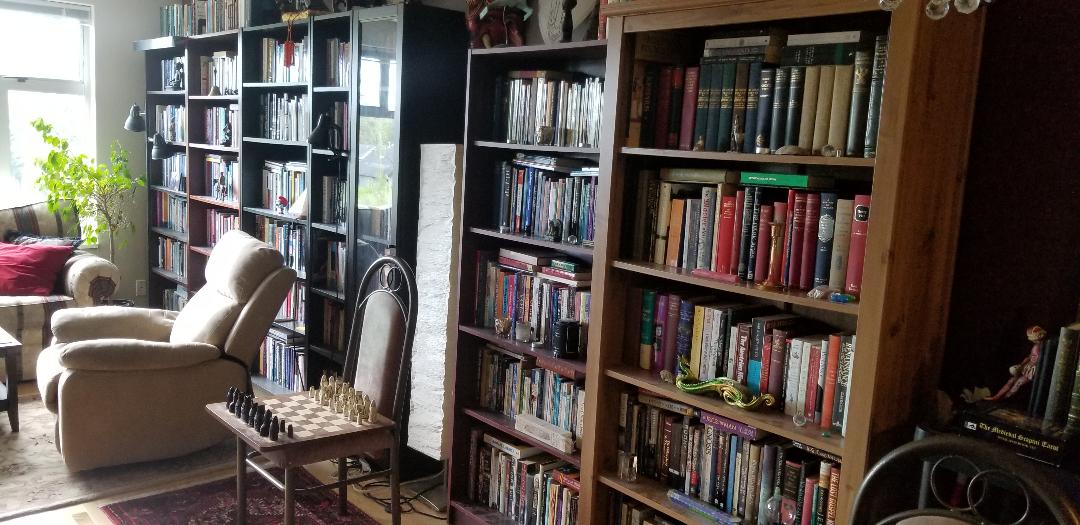 Of my nearly 3,000 books, close to 1/3rd of them, or about 1,000, are on the Western esoteric tradition: alchemy, high and low magic, biographies of notorious wizards, academic studies, both historical and anthropological, on the history, psychology, and sociology of magic, shamanism, the Kabbalah, the tarot, famous secret and esoteric organizations, instructional books, secret codes and ciphers, works on werewolves and vampires and monsters and strange creatures, and so on. But despite this long-standing interest in the esoteric traditions, I have limited understanding of the book-making process itself.
Of my nearly 3,000 books, close to 1/3rd of them, or about 1,000, are on the Western esoteric tradition: alchemy, high and low magic, biographies of notorious wizards, academic studies, both historical and anthropological, on the history, psychology, and sociology of magic, shamanism, the Kabbalah, the tarot, famous secret and esoteric organizations, instructional books, secret codes and ciphers, works on werewolves and vampires and monsters and strange creatures, and so on. But despite this long-standing interest in the esoteric traditions, I have limited understanding of the book-making process itself. 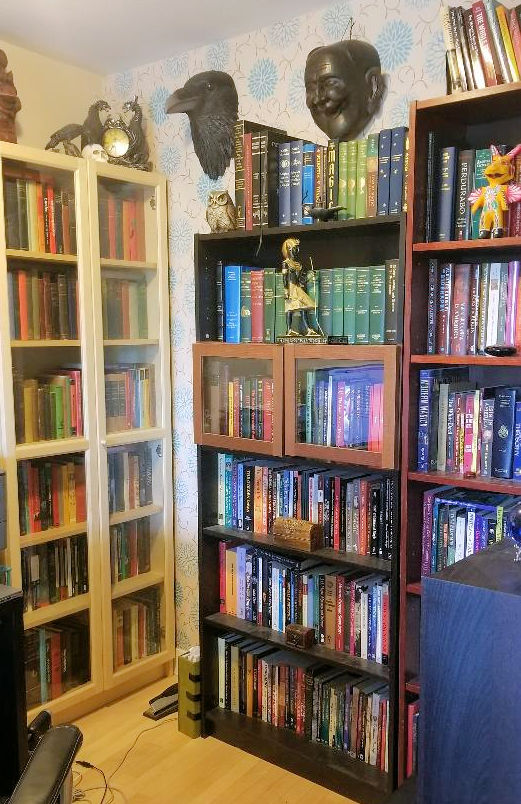 Seeing something of what goes on behind the process of making a physically extraordinary book, the various materials and all else involved, was interesting and something that Gabriel and Anathema Publishing are all about.
Seeing something of what goes on behind the process of making a physically extraordinary book, the various materials and all else involved, was interesting and something that Gabriel and Anathema Publishing are all about.
The Dancing Sorcerer is comprised of ten separate essays, touching on a broad range of interrelated material, most of which reduces to an exploration of the initiatory process undergone by any seeker of self-understanding and wisdom. Jung had called this the process of ‘individuation’. Joseph Campbell was referring to something similar via what he described as the ‘hero’s journey’. This is essentially a ‘monomyth’ structured along particular stages, that include ‘departure’, ‘initiation’, and ‘return’.
Of course, when you explore the integral theorists, such as Ken Wilber, you begin to understand that this ‘return’ is not a reversion. It is not going from 1 to 2 and back to 1 again. Wilber had clarified this in his ‘pre-trans’ fallacy, which is about how pre-ego stages can be confused with ‘post-ego’ stages. For example, a young child may seem at times to be blissfully connected to everything around them, and not caught up in neurotic thinking. That may seem impressive, and even desirable from the point of view of the neurosis of the typical adult. But the child’s state is more a tabula rasa, a blank slate, not some transcendent state of oneness. This is an important point to understand because pre-rational states can be confused with transrational states. Pre-rational, or irrational, is not the same as wisdom, although it can mimic it.
In the personal growth sub-culture, a misunderstanding often arises, connected to the idea that we need to ‘get out of our heads’ and ‘more into our bodies and feelings’. While it is true that many people are identified with their thoughts and lack emotional sensitivity, or more seriously may even be quite disconnected or dissociated from their feelings and their body, it is not true that the rational mind is somehow the problem or even the enemy on the path to becoming more conscious overall. And so progressing along the journey involves transcending and including, not transcending and dissociating. This is, arguably, a lesson we are facing now with the current situation on the planet.
The Dancing Sorcerer is an esoteric book, and so it focuses, as per its subtitle, on the world of practitioners of the Western esoteric tradition, and especially the worlds of ‘high’ or ‘ceremonial magic’. But it is also a book that presents the idea of the initiatory process undergone by anyone who seeks more wisdom in life. The key part of this process, part of what Campbell referred to as the ‘initiation’ stage, involves an encounter with the shadow side of our nature. Campbell had used the term ‘the road of trials’. David Leeming perhaps nailed it more concisely, with what he called ‘trial and quest, death, and descent into the underworld’.
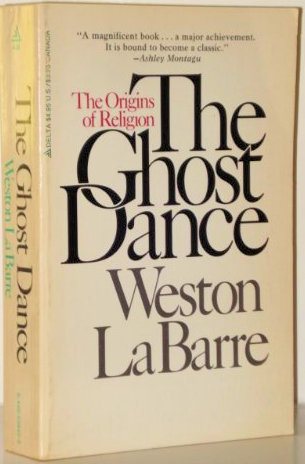 The Dancing Sorcerer refers to a real piece of cave art, found in southern France in 1914, known by that name, depicting what seems to be an ancient shaman, an initiator. I first heard the term ‘dancing sorcerer’ in connection with this 15,000-year-old painting in Weston LaBarre’s 1970 work The Ghost Dance: The Origins of Religion. Chapter 13 of his book is titled ‘The Dancing Sorcerer’. Strangely, when I first read that chapter many years ago, I had a premonition that someday I would write a book with that title. LaBarre’s work is a broad overarching 600-page masterpiece on the roots of religion and the ancient theme of initiation. The 'Ghost Dance' of course refers to the famous ritual event initiated by the shaman Wovoka in 1890, in response to the looming destruction of Native Indian culture with the white man's incursion in the late 19th century. It was a collective ritual designed to revive the spirits of its people, though it and what it intended was crushed by the forces of fate.
The Dancing Sorcerer refers to a real piece of cave art, found in southern France in 1914, known by that name, depicting what seems to be an ancient shaman, an initiator. I first heard the term ‘dancing sorcerer’ in connection with this 15,000-year-old painting in Weston LaBarre’s 1970 work The Ghost Dance: The Origins of Religion. Chapter 13 of his book is titled ‘The Dancing Sorcerer’. Strangely, when I first read that chapter many years ago, I had a premonition that someday I would write a book with that title. LaBarre’s work is a broad overarching 600-page masterpiece on the roots of religion and the ancient theme of initiation. The 'Ghost Dance' of course refers to the famous ritual event initiated by the shaman Wovoka in 1890, in response to the looming destruction of Native Indian culture with the white man's incursion in the late 19th century. It was a collective ritual designed to revive the spirits of its people, though it and what it intended was crushed by the forces of fate.
The main idea is that our lives on this Earth are set up for certain possibilities, throughout which we are constantly being schooled in something. The curriculum of this teaching is in perfect response to our degree of readiness. And that ‘degree of readiness’ is different for each person. The factors behind this are extraordinarily complex, largely beyond fathom intellectually, and finally, a deep mystery. One person dies young with no chance at entering the initiatory journey, another lives to an old age with seemingly no interest in it. Any yet all are still undergoing it, in their own way.
For the one who seeks with conscious intent to enter such a path, they must at some point make the ‘descent into the underworld’ to undergo their own personal trial. This part of the journey can occur in so many ways. The main idea for a seeker of wisdom to grasp, however, is that there is no real progress without deconstructing false pride and seeing into the depths of our various delusions. The main delusion, above all, is that we have nothing to do with the problems and suffering and evil we see around us.
The chapters in The Dancing Sorcerer deal with some intense shadow elements and their various kinds of manifestations—demonic, vampiric, sociopathic, and so forth—all of which, it is repeatedly stressed, are in the mind of the seeker in different forms and ultimately must be taken ownership of. The idea is straightforward but is revisited in the book numerous times in order to work on the mind of the reader and help erode the resistance that so commonly arises in the face of such a consideration. Few people like to take responsibility for their own capacity for darkness. As Jung had once written,
People are, on the whole, less good than they imagine themselves or want to be.
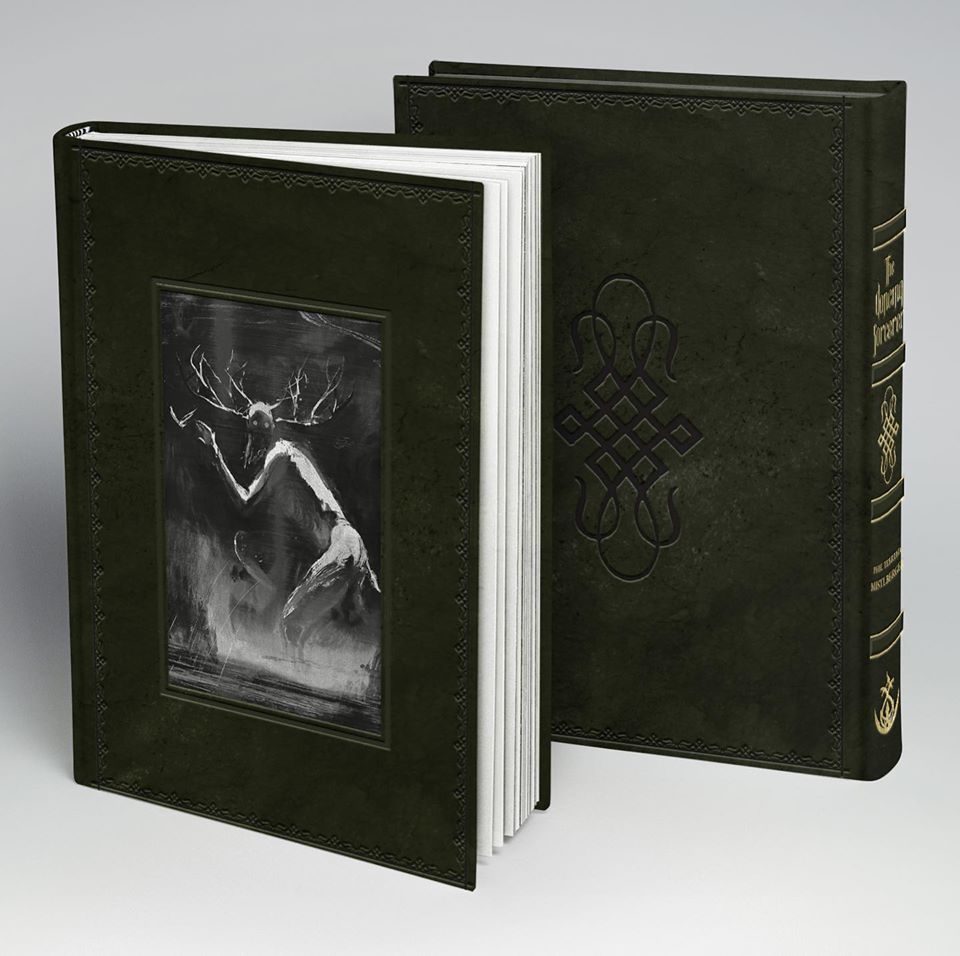 These words may seem discouraging, but in our current times in the spring of 2020, dealing with a global pandemic, we are faced with having to encounter elements of our character that may be in resistance to the idea that we are not special—much less in any spiritual fashion. Understanding Jung’s words, and really grasping the element of the initiatory journey we are all on, may not just help us personally, it may even be our collective salvation.
These words may seem discouraging, but in our current times in the spring of 2020, dealing with a global pandemic, we are faced with having to encounter elements of our character that may be in resistance to the idea that we are not special—much less in any spiritual fashion. Understanding Jung’s words, and really grasping the element of the initiatory journey we are all on, may not just help us personally, it may even be our collective salvation.
I would be remiss to not also mention that The Dancing Sorcerer is illustrated throughout by the talented artist Rowan Cassidy. His intriguing and brooding images seem the perfect compliment to the substance of the text. Gabriel did well in pairing our respective abilities. (The image on the right is of the very limited artisanal edition, which is sold out, as I understand). The Dancing Sorcerer, in standard hardback or softcover, is available via Anathema Publishing: https://www.anathemapublishing.com/current